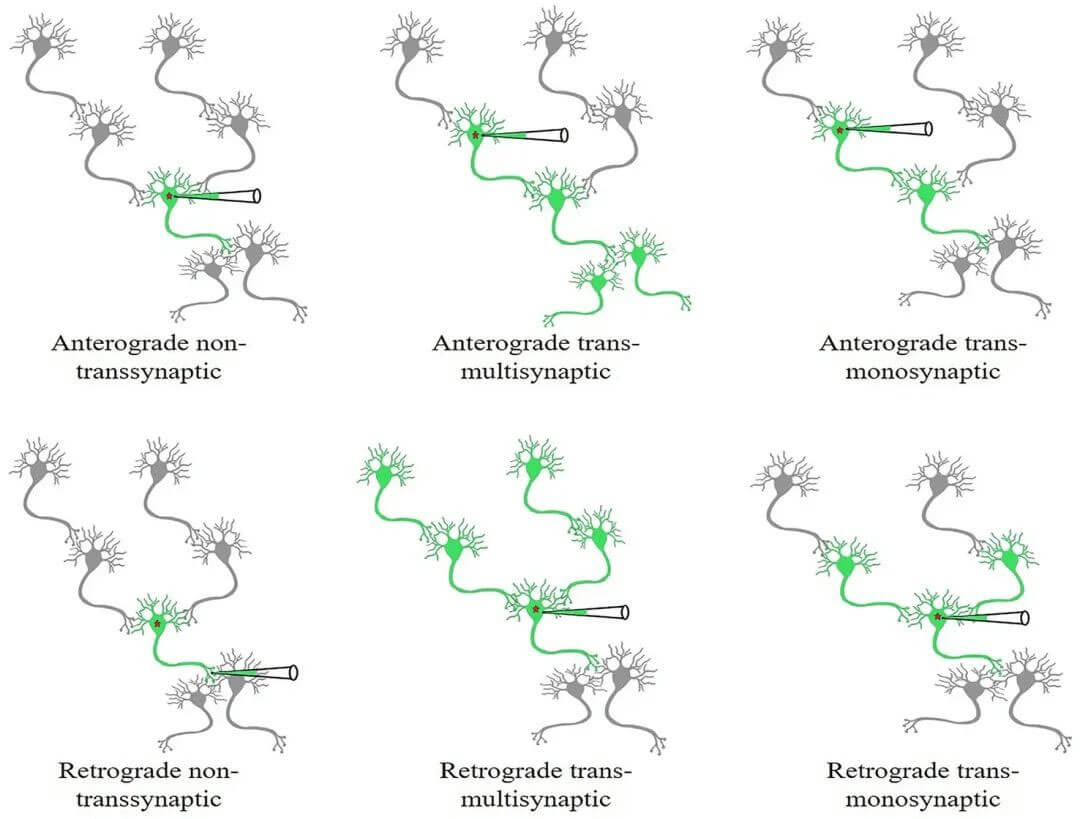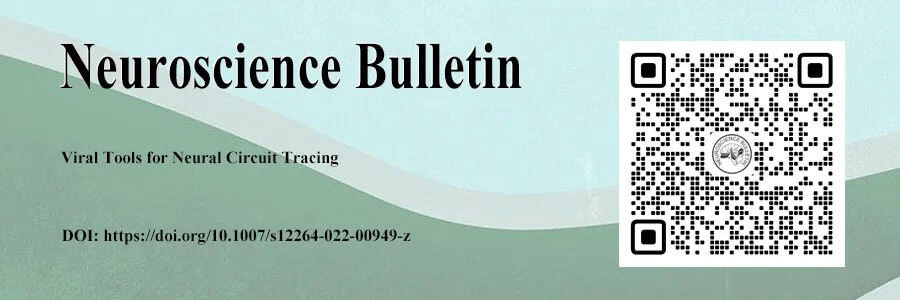- E-mail:support@braincase.cn
- Tel:18971216876

Viral Tools for Neural Circuit Tracing
Liu Qing1,4 • Wu Yang2,4 • Wang Huadong1,4 • Jia Fan1,4 • Xu Fuqiang1,2,3,4
The human brain is the most complex and mysterious structure in the universe, and brain science has always been regarded as the "ultimate territory" for humans to understand natural phenomena. The human brain contains about 100 billion neurons connected by about 100 billion synapses, forming an almost unlimited number of neural circuits at the mesoscopic level. These neural circuits are the structural basis for coordinating and executing various basic and advanced brain functions. Therefore, elucidating neural circuits is a prerequisite for understanding the principles of brain function and the pathogenesis of neurological diseases.
Over the past few decades, many powerful neural tracing and neuroimaging techniques have been developed to study neural circuits. Among them, viral tools modified from natural strains of neurotropic viruses are widely used in neural circuit research. They have cell type specificity, anterograde/retrograde propagation along neural circuits, and transsynaptic progression. Control, cross-synaptic propagation of signals without attenuation and other characteristics. Neurotropic viruses are a type of virus that can infect nerve cells and propagate and multiply along neural circuits, including pseudorabies virus (PRV), herpes simplex virus (HSV), rabies virus, RV), Vesicular stomatitis virus (VSV) and Sindbis virus (SINV), etc. In addition, some recombinant viral vectors that do not cross synapses (such as adeno-associated virus (AAV) and lentivirus (LV)) can assist in the expression of foreign genes (can carry a variety of reporter genes, such as fluorescent labels, functional indicators/regulatory elements, etc.), or effectively label the fine structure of neurons (e.g., Semliki forest virus (SFV)), or reveal upstream input to local brain regions (e.g., canine adenovirus type 2 (Canine adenovirus type 2, CAV-2) and AAV2-retro with very efficient retrograde labeling ability), or effectively cross the mouse blood-brain barrier (such as AAV9-PHP.eB), or retrograde infection after crossing the blood-brain barrier Projection neurons (such as AAV9-retro).
This article summarizes the latest research progress of the above-mentioned viral tools for neural circuit tracing, including viral tools for cross-species (especially non-human primates) neural circuit tracing, and provides an overview of the development and implementation of viral tools. The direction of optimization is prospected, including further reducing toxicity, improving specificity and enhancing sensitivity, especially taking into account structural and functional studies and viral tools that match other research methods such as omics technology. The complexity of neural circuits poses unprecedented challenges to the development of technologies and tools. The development of new technologies and strategies, as well as the constant demand for new tools in neuroscience research, will promote the rapid development of this field.

Schematic diagram of anterograde or retrograde propagation of virus tools
Keywords: neural circuits; viral tools; anterograde; retrograde; transsynaptic propagation
To view the article, please scan the QR code below or copy the original link to view the online version:
https://link.springer.com/article/10.1007/s12264-022-00949-z
▲Long press to identify the QR code and read the paper
If other components are needed, they can also be customized!
Come and contact Xiaobu
For neuroscience research, look to Brinkes,
a good helper on your scientific research journey.